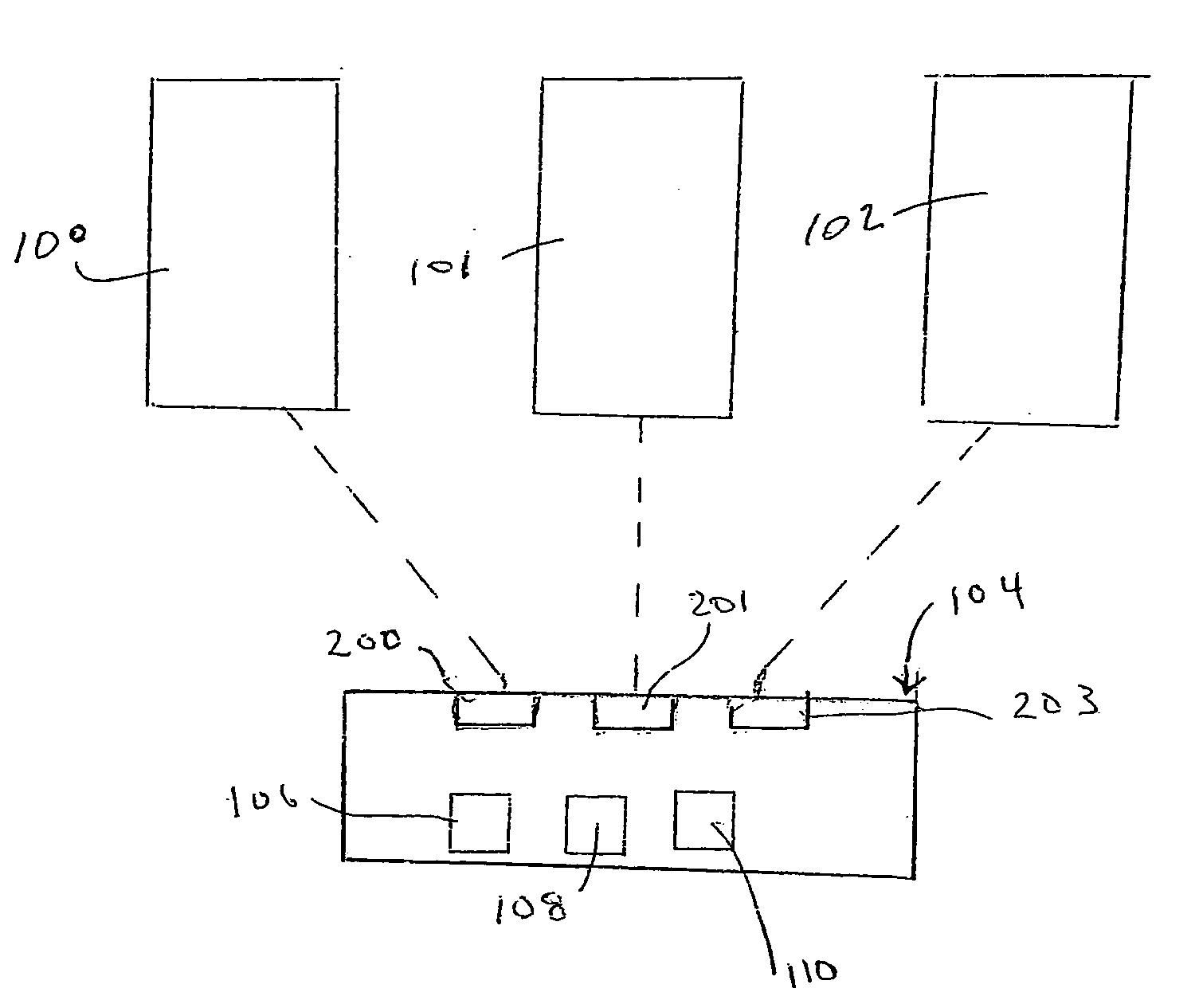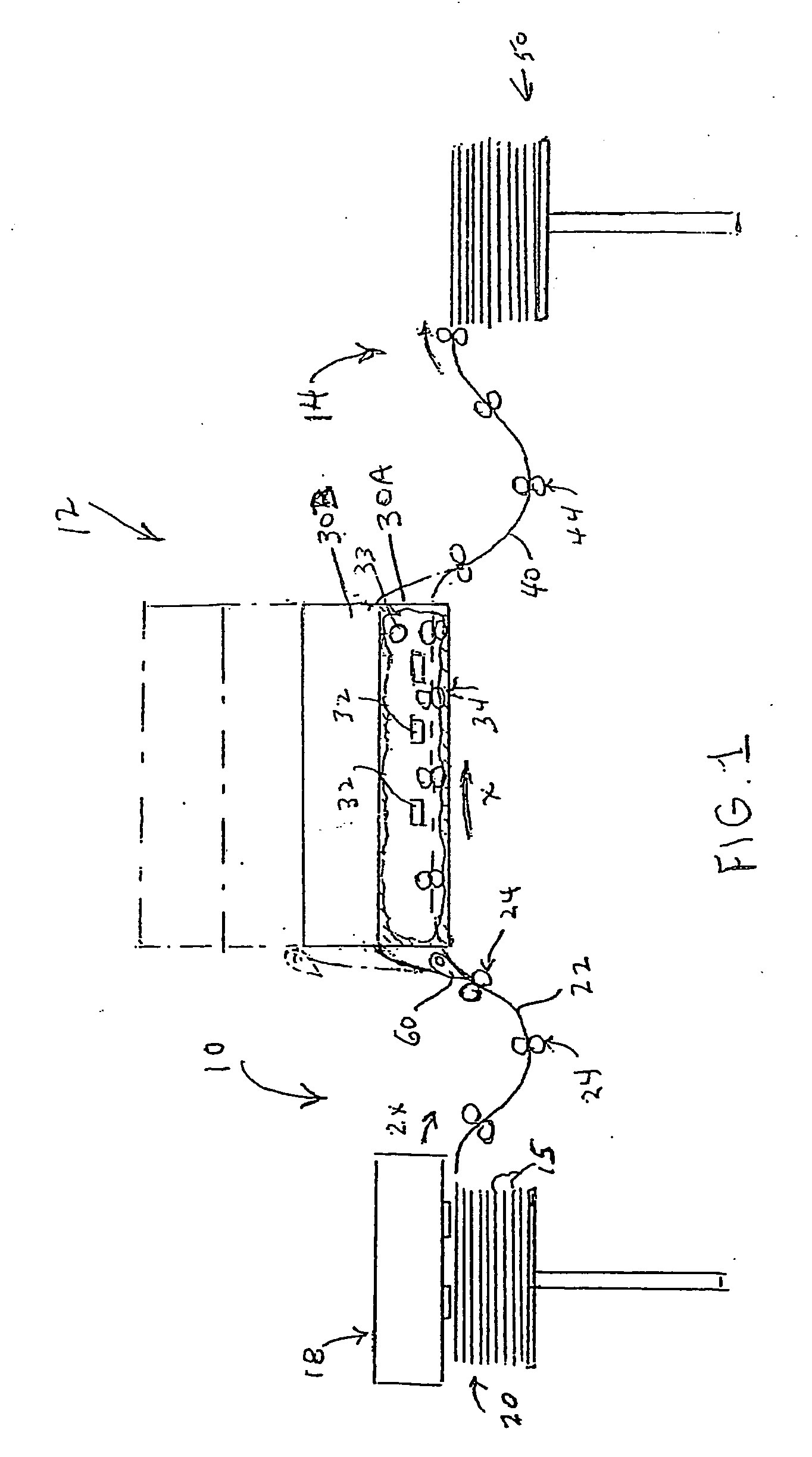Printing methods and apparatus
a printing method and printing method technology, applied in printing, typewriters, electrical devices, etc., can solve the problems of reducing quality, reducing the time for ripping, and reducing the quality of the paper, and achieve the effect of high quality
- Summary
- Abstract
- Description
- Claims
- Application Information
AI Technical Summary
Problems solved by technology
Method used
Image
Examples
Embodiment Construction
[0013]Depicted in FIG. 1 is a printing apparatus comprising a sheet infeed section 10, a printing section 12, and a sheet outfeed section 14. The sheet infeed section 12 comprises a feed mechanism 18 which can be any suitable conventional high-speed sheet feeder capable of feeding printable sheets 15, such as blank paper sheets, sequentially from a preferably vertical stack 20 of sheets (e.g., see U.S. Pat. No. 6,095,513, disclosing a high-speed sheet feeder). The sheets are fed onto an infeed path 22 at a feed speed and are advanced along that path by a conventional advancing mechanism such as roller pairs 24 in which one roller of each pair is driven by a motor. One or more stacks could feed into the feed path.
[0014]The printing section 12 comprises a plurality of printing units. Any type of printing units can be used and they can be disposed in any suitable arrangement. However, it is preferable to use vertically-stacked, digital, inkjet printing units, which are desirably of ide...
PUM
 Login to View More
Login to View More Abstract
Description
Claims
Application Information
 Login to View More
Login to View More - R&D
- Intellectual Property
- Life Sciences
- Materials
- Tech Scout
- Unparalleled Data Quality
- Higher Quality Content
- 60% Fewer Hallucinations
Browse by: Latest US Patents, China's latest patents, Technical Efficacy Thesaurus, Application Domain, Technology Topic, Popular Technical Reports.
© 2025 PatSnap. All rights reserved.Legal|Privacy policy|Modern Slavery Act Transparency Statement|Sitemap|About US| Contact US: help@patsnap.com



